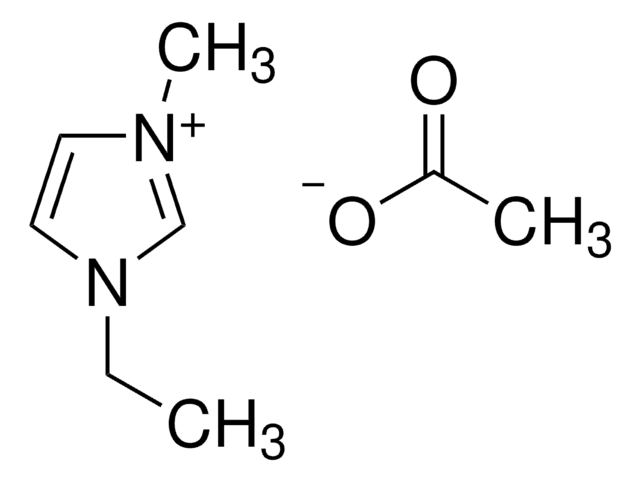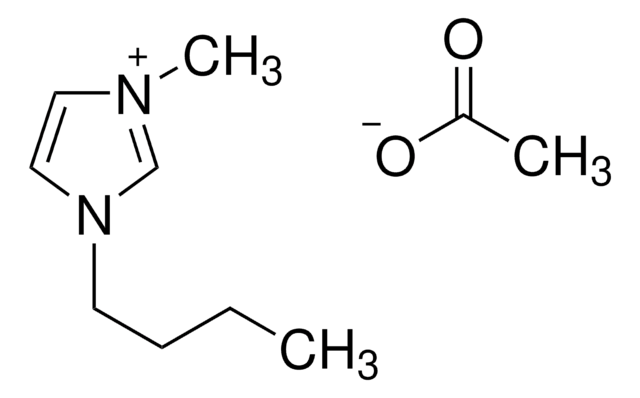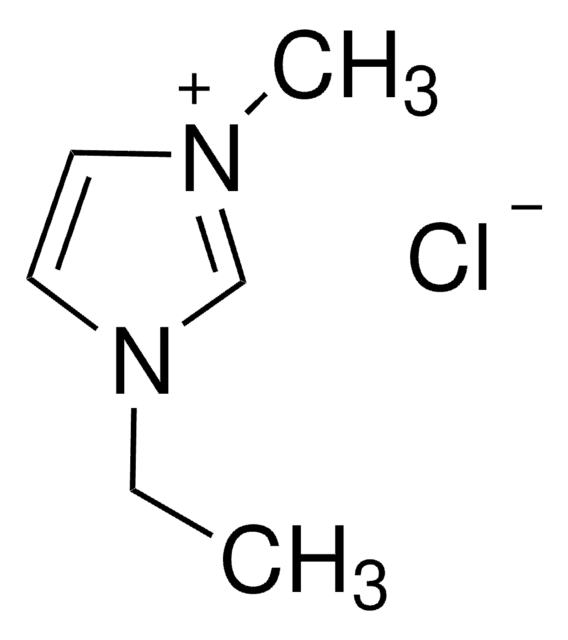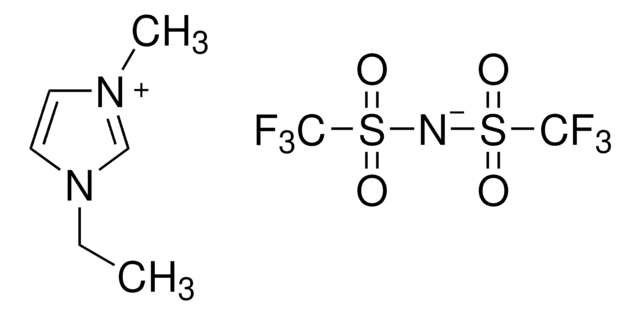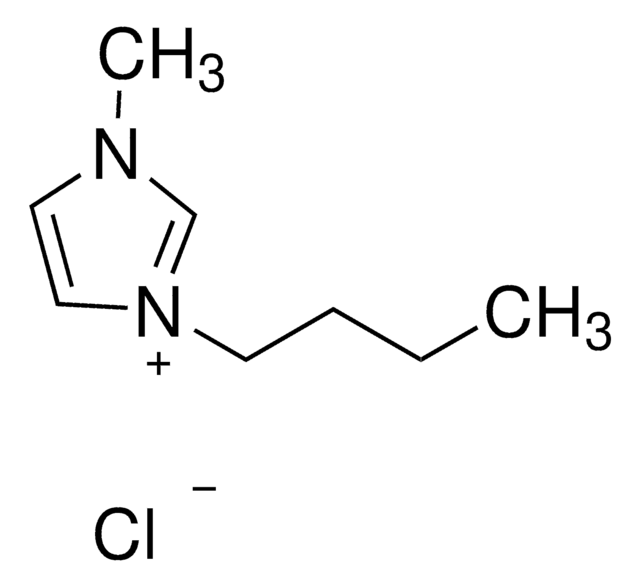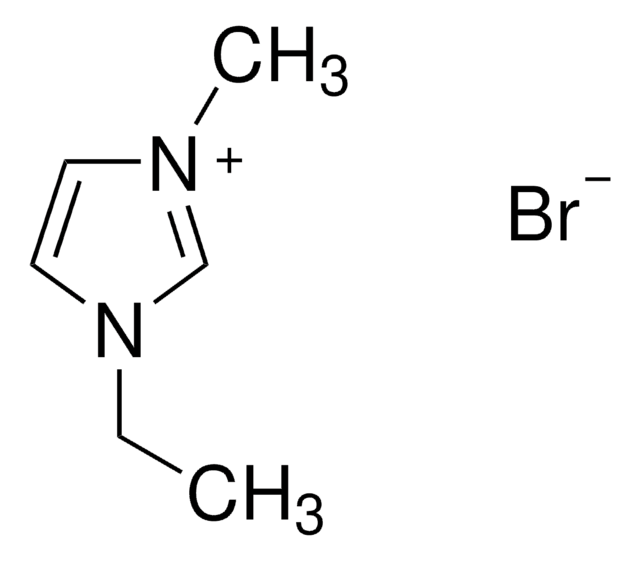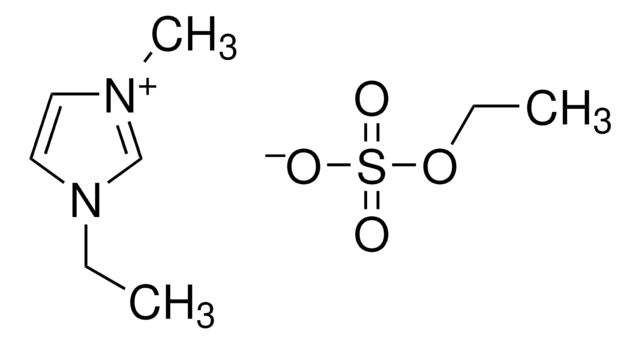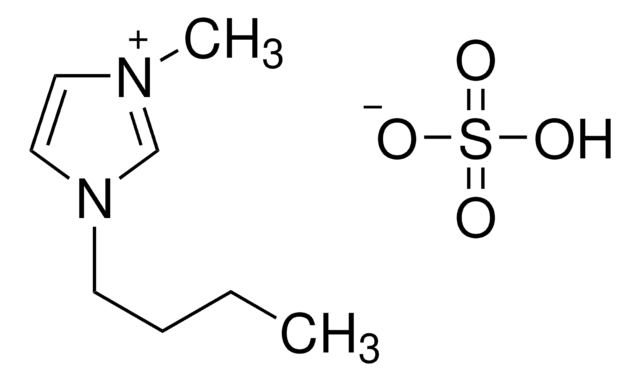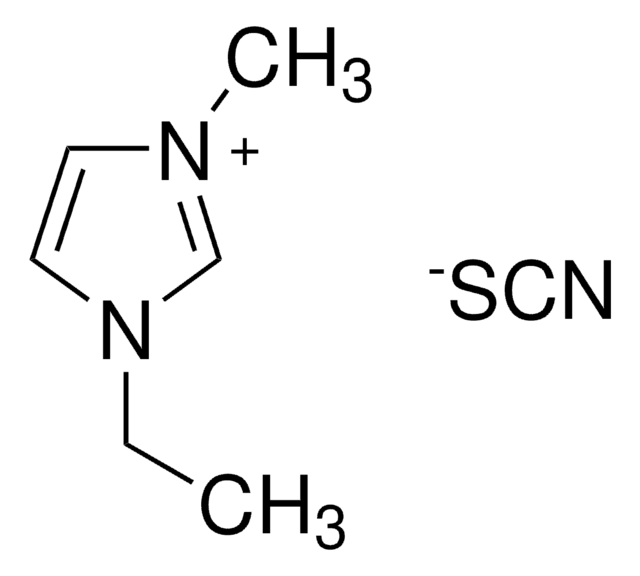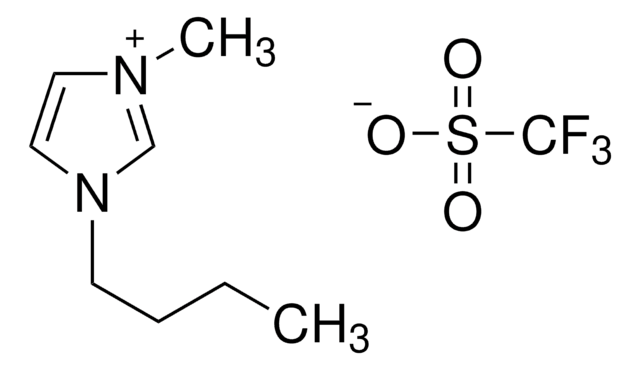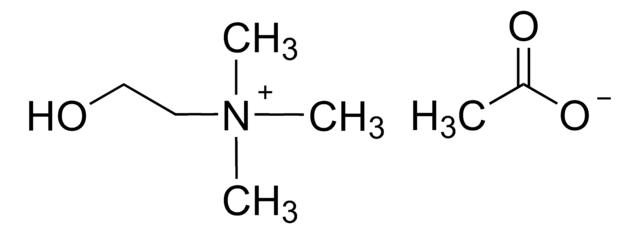51053
1-Ethyl-3-methylimidazolium acetate
≥95.0% (HPLC)
Synonym(s):
EMIM Ac
About This Item
Recommended Products
Assay
≥95.0% (HPLC)
origin
Switzerland origin
mp
>30 °C (product can occur as an undercooled melt)
density
1.101 g/cm3 at 20 °C
SMILES string
CC([O-])=O.CCn1cc[n+](C)c1
InChI
1S/C6H11N2.C2H4O2/c1-3-8-5-4-7(2)6-8;1-2(3)4/h4-6H,3H2,1-2H3;1H3,(H,3,4)/q+1;/p-1
InChI key
XIYUIMLQTKODPS-UHFFFAOYSA-M
Looking for similar products? Visit Product Comparison Guide
General description
Application
Signal Word
Warning
Hazard Statements
Precautionary Statements
Hazard Classifications
Acute Tox. 4 Oral - Skin Irrit. 2 - Skin Sens. 1B
Storage Class Code
10 - Combustible liquids
WGK
WGK 3
Flash Point(F)
327.2 °F - closed cup
Flash Point(C)
164 °C - closed cup
Personal Protective Equipment
Certificates of Analysis (COA)
Search for Certificates of Analysis (COA) by entering the products Lot/Batch Number. Lot and Batch Numbers can be found on a product’s label following the words ‘Lot’ or ‘Batch’.
Already Own This Product?
Find documentation for the products that you have recently purchased in the Document Library.
Customers Also Viewed
Articles
Under the trade name BASIONICS™, BASF offers a portfolio of Ionic Liquids—mainly based on imidazolium cations. The BASIONICS™ portfolio opens up a broad range of basic properties of Ionic Liquids and is classified into standard, acidic, basic, liquid at RT and low viscosity products and opens up a wide range of possible applications.
Our team of scientists has experience in all areas of research including Life Science, Material Science, Chemical Synthesis, Chromatography, Analytical and many others.
Contact Technical Service